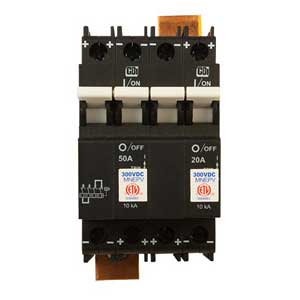OutBack & Midnite Solar Breakers & Fuses
Hey, do you know how to install solar panel breakers and fuses? They are essential for protecting your solar system from overcurrents and short circuits. Here's a quick guide on how to do it: - First, you need to determine the size and type of breakers and fuses you need for your system. You can use online calculators or consult an electrician for this step. - Next, you need to mount the breakers and fuses in a suitable enclosure near your solar panels. Make sure the enclosure is weatherproof and has enough space for wiring. - Then, you need to connect the positive and negative wires from your solar panels to the corresponding terminals on the breakers and fuses. Use appropriate wire sizes and connectors for this step. - Finally, you need to test your system and make sure everything is working properly. You can use a multimeter or a clamp meter to measure the voltage and current of your system. That's it! You have successfully installed solar panel breakers and fuses. Now you can enjoy your clean and green energy without worrying about electrical hazards.

Overcurrent Protection; National Electric Code, 690.9
Circuits and Equipment. solar source circuit, solar output circuit, inverter output circuit, and storage battery circuit conductors and equipment shall be protected in accordance with the requirements of Article 240. Protection devices for solar source circuits and PV output circuits shall be in accordance with the requirements of 690.9(B) through (E). Circuits, either ac or dc, connected to current-limited supplies (e.g., solar modules, ac output of utility-interactive inverters), and also connected to sources having significantly higher current availability (e.g., parallel strings of modules, utility power), shall be protected at the source from overcurrent.
Related Items; Racks, Solar Batteries & Electrical Distribution for Solar Kits Total Cost
| DIN Mount AC Circuit Breakers |
| These are DIN mount AC breakers with set-screw compression terminals for 14 to 2 AWG wire. Use these for AC in OutBack FLEXware, MidNite E-Panels, and Magnum panels. DIN rail mount with set-screw compression terminals, #14 to 2 AWG (1.62 mm to 6.54 mm) |
| Breaker Amps | Voltage Rating | OutBack Model | MidNite Model | Part Number | Price | ||
| 10 | 120 | DIN-10-AC-277 | MNEAC10 | 05303060 |
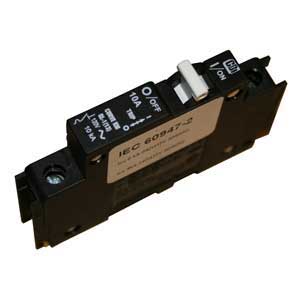 |
||
| 15 | 120 | DIN-15-AC | MNEAC15 | 03004415 |
 |
||
| 15 | 120/240 | DIN-15D-AC | MNEAC15-2P | 03004416 |
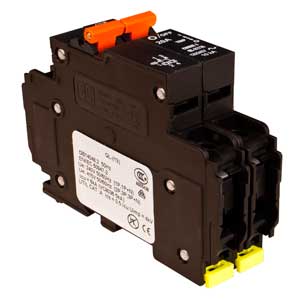 |
||
| 20 | 120 | DIN-20-AC | MNEAC20 | 5300019 |
 |
||
| 20 | 120/240 | DIN-20D-AC | MNEAC20-2P | 5300117 |
 |
||
| 25 | 120/240 | DIN-25D-AC | -- | 5300051 |
 |
||
| 15 | 277 | DIN-15-AC-277 | MNEAC15QZD | 5300096 |
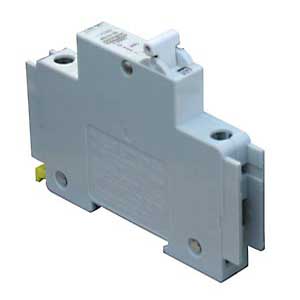 |
||
| 30 | 277 | DIN-30-AC-277 | MNEAC30QZD | 5300053 |
 |
||
| 30 | 277 | DIN-30D-AC-480 | MNEAC30QZD2P | 5300054 |
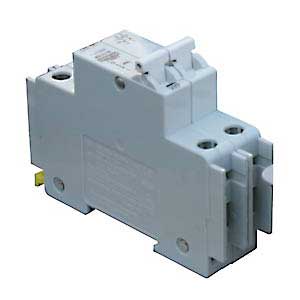 |
||
| 30 | 277/480 | DIN-30T-AC-480 | MNEAC30QZD3P | 03004435 |
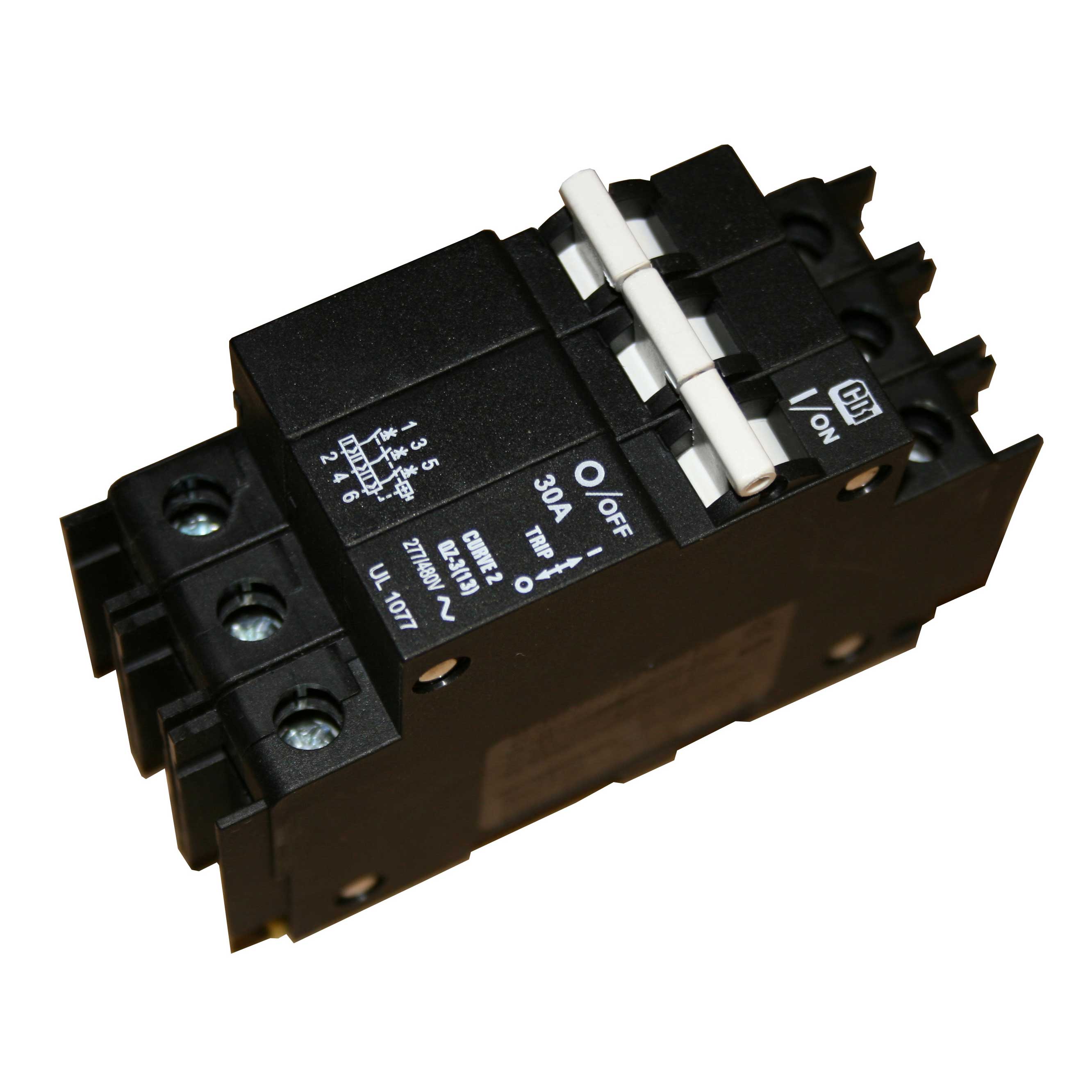 |
||
| 50 | 277 | DIN-50-AC-277 | MNEAC50QZD | 5300061 |
 |
||
| 50 | 277 | DIN-50D-AC-480 | MNEAC50QZD2P | 5300063 |
 |
||
| 50 | 277/480 | DIN-50T-AC-480 | MNEAC50QZD3P | 5300116 |
 |
||
| 60 | 277 | DIN-60-AC-277 | -- | 5300097 |
 |
||
| 60 | 277 | DIN-60D-AC-277 | MNEAC60QZD2P | 05303036 |
 |
||
| 60 | 120/240 VAC | -- | MNEAC60-2P | 05304038 |
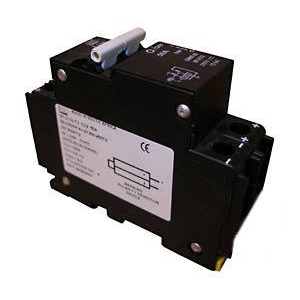 |
| DIN Mount 150 VDC Circuit Breakers |
| DIN rail mount breakers fit MidNite and Magnum enclosures, and MNPV and OutBack PV array combiners. The positive line should be connected to the + pole of the breaker. The maximum PV array voltage must not exceed the voltage rating of the breakers used. Width (inches) 0.5 |
| MidNite’s breakers are rated to break the full rated load at the rated voltage repeatedly, with NO DAMAGE. Always use a properly sized breaker for disconnecting. |
| MNEPV breakers are the same as CBI QY breakers except the standard used is inadequate for the solar industry. MidNite breakers have been evaluated by ETL to 150VDC and are listed for US and Canada. All of the NRTL listings still apply. Breakers ordered under the CBI part numbering system will not be listed for 150VDC and in many cases are not suitable for the solar industry. 150VDC ETL listed in the US and Canada. |
| Breaker Amps | OutBack Model | MidNite Model | Part Number | Price | ||
| 1 | DIN-1-DC | MNEPV1 | 5300099 |
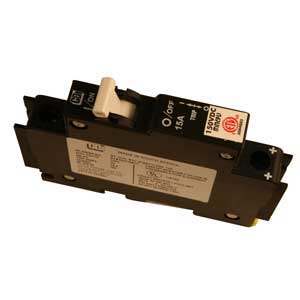 |
||
| 2 | DIN-2-DC | MNEPV2 | 5300100 |
 |
||
| 3 | DIN-3-DC | MNEPV3 | 5300101 |
 |
||
| 4 | DIN-4-DC | MNEPV4 | 5300102 |
 |
||
| 5 | DIN-5-DC | MNEPV5 | 5300103 |
 |
||
| 6 | DIN-6-DC | MNEPV6 | 5300104 |
 |
||
| 8 | DIN-8-DC | MNEPV8 | 5300091 |
 |
||
| 9 | DIN-9-DC | MNEPV9 | 5300106 |
 |
||
| 10 | DIN-10-DC | MNEPV10 | 5300030 |
 |
||
| 12 | -- | MNEPV12 | 5300107 |
 |
||
| 15 | DIN-15-DC | MNEPV15 | 5300031 |
 |
||
| 20 | -- | MNEPV20 | 5300032 |
 |
||
| 30 | -- | MNEPV30 | 5300033 |
 |
||
| 40 | -- | MNEPV40 | 5300108 |
 |
||
| 50 | -- | MNEPV50 | 5300109 |
 |
||
| 63 | -- | MNEPV63 | 5300034 |
 |
| DIN Mount 300 VDC Circuit Breakers |
| These breakers fit MidNite MNPV and OutBack combiners. Use breakers for arrays with maximum voltage of 300 or less 200 - 250 VDC charge controllers. 20/50 Amp 300 VDC 4 Pole Din Rail Mount Breaker. Width (inches) 2" |
Circuit Breakers and Fuses over current protection; electrical distribution
Circuit breakers and fuses are called over-current protection equipment because they do exactly that. Located in combiners, main breaker panels, subpanels and occasionally sometimes inside inverters they protect the house wiring from overloads which can be a fire hazard. A circuit or wire overload occurs when the load placed on the circuit is greater than the rating of the overcurrent breaker or fuse. A direct short is when the hot and neutral wires are either directly or in a roundabout way touching. A ground fault is a short in which the hot wire touches a piece of metal or human that is grounded.
Circuit breakers are the most common use of overcurrent protection because they are safe and easy to disconnect or reset. A circuit breaker acts in a similar fashion to a fuse in that it measures overcurrent in a circuit but instead of blowing the fuse it opens the circuit. Breakers are unique in that not only do they detect overcurrent in a circuit, they are designed to be ambient compensated. That is they are engineered to de-rate as the air around the breaker heats up. Example, a 20 amp breaker is sitting between two other breakers generating a great deal of heat, the 20 amp breaker may trip at 16 amps. MidNite Solar breakers are unique and especially well-suited for PV systems because they are rated to break the full rated load at the rated voltage repeatedly, with NO DAMAGE.
Single-pole breakers control the amps on loads that use only one leg of the incoming 240 volts AC. Double-pole breakers rated at 120/240 VAC control amps on both legs of the load. Double-pole breakers normally consist of two single-pole breakers with a shared handle and internal trip. On high voltage DC circuits single pole breakers are stack from two to four to achieve a safe and code compliant over-current protection.
Solar Features and Benefits
- DYI Solar Panels
- Cost of Solar Batteries
- Net Metering Panel Kit
- Federal Solar Tax Credits
- Battery Systems
- Solar Backup Costs
- Buy Solar Batteries
- Installing Water Heating Panels
- Commercial Systems
- Solar Energy Installation
- Powerpack Solar Panel Cost
- Home Kits, Off-grid Systems
- Roof Ground Mount
- Utility Rebates
- Best Solar Batteries
